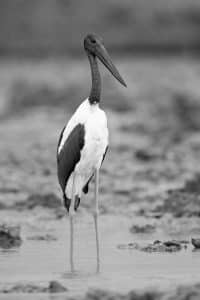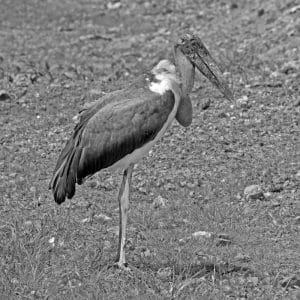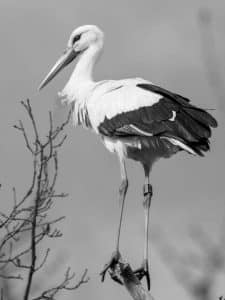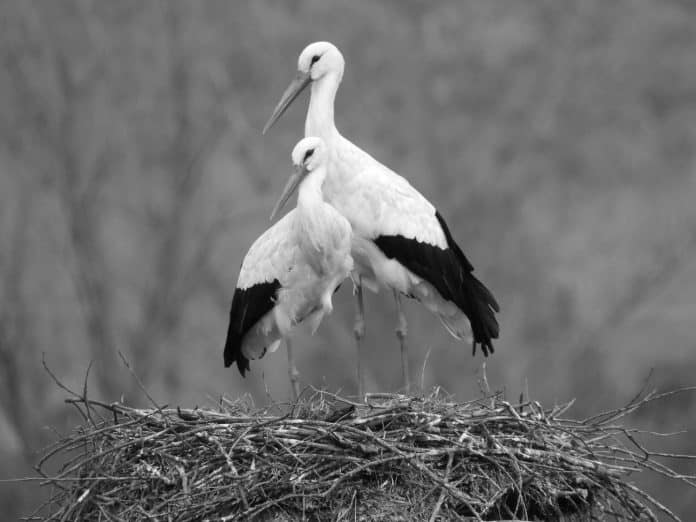Introduction to storks in Tanzania
Tanzania, a country known for its breathtaking landscapes and remarkable wildlife, is home to a diverse array of avian species. Among these fascinating creatures are the storks, majestic birds that grace the skies of Tanzania with their elegance and grace. Storks are a group of long-legged wading birds that belong to the family Ciconiidae. In Tanzania, these birds can be found in various habitats, from wetlands and rivers to savannas and forests. Their distinctive appearance and intriguing behaviors make them a captivating sight for birdwatchers and nature enthusiasts. In this article, we will delve into the world of storks in Tanzania, exploring their diversity, habitat, breeding behavior, feeding habits, threats, and conservation efforts. So, grab your binoculars and get ready to embark on a journey to discover the waders and wanderers of Tanzania!
The diversity of stork species in Tanzania

Tanzania boasts an impressive variety of stork species, each with its own unique characteristics and beauty. One of the most iconic storks found in Tanzania is the African Fish Eagle, a large bird with a white head, chestnut body, and a distinctive black beak. This magnificent species is known for its impressive fishing skills, swooping down from the sky to catch fish with its sharp talons. Another common stork species in Tanzania is the Saddle-billed Stork, recognized by its striking black and white plumage and its brightly colored bill with a yellow saddle-like marking. These storks are often seen wading in shallow waters, patiently waiting for their prey. The Marabou Stork, with its bald head and massive size, is also a frequent visitor to Tanzania. These scavengers are often found near human settlements, scavenging for food scraps and other waste. Other stork species that can be spotted in Tanzania include the Yellow-billed Stork, Black Stork, and Woolly-necked Stork, each adding to the rich tapestry of avian life in the country.
Habitat and distribution of storks in Tanzania
Storks in Tanzania are highly adaptable birds, capable of thriving in a variety of habitats. They can be found in wetlands, such as lakes, marshes, and swamps, where they forage for fish, frogs, and other aquatic creatures. Storks are also known to inhabit rivers and streams, where they search for small mammals and reptiles. In addition, these birds can be found in savannas and grasslands, where they feed on insects, small birds, and rodents. Some stork species, such as the Marabou Stork, are even known to take advantage of human settlements, scavenging for food scraps and nesting on tall structures like buildings and trees. The distribution of storks in Tanzania is widespread, with different species occupying different regions of the country. For example, the African Fish Eagle can be found near lakes and rivers, while the Saddle-billed Stork prefers the wetlands of national parks like the Serengeti and Selous. By understanding the habitat and distribution of storks in Tanzania, we can better appreciate and protect these beautiful birds.
Breeding behavior and nesting habits of storks in Tanzania
Breeding season is an important time for storks in Tanzania, as they engage in elaborate courtship rituals and build intricate nests to raise their young. Storks are monogamous birds, meaning they mate with the same partner for life. During the breeding season, male storks engage in impressive displays to attract females, including elaborate dances and bill-clattering. Once a pair has formed, they begin building their nest, often in tall trees or on man-made structures. Storks are known for their large, bulky nests made from sticks, twigs, and other plant materials. These nests can reach impressive sizes, providing a secure and comfortable home for the stork and its offspring. The female stork typically lays a clutch of two to five eggs, which both parents take turns incubating. After a month-long incubation period, the eggs hatch, and the parents work together to feed and care for the chicks. The breeding behavior and nesting habits of storks in Tanzania showcase the dedication and commitment of these birds to their offspring.
Feeding habits and diet of storks in Tanzania

Storks in Tanzania are voracious hunters, employing a variety of feeding techniques to secure their meals. Many stork species are specialized fish hunters and have adapted to catching fish in various aquatic environments. These birds are often seen standing motionless in shallow water, patiently waiting for a fish to swim within striking distance. Once the prey is spotted, the stork swiftly plunges its sharp beak into the water, snatching the fish with precision and agility. Storks also feed on a variety of other foods, depending on their species and habitat. They are known to eat frogs, snakes, lizards, small mammals, and even large insects. Some stork species, such as the Marabou Stork, have a scavenging lifestyle and feed on carrion and garbage. The diet of storks in Tanzania is diverse and adaptable, allowing them to survive and thrive in different ecosystems.
Threats and conservation efforts for storks in Tanzania
Despite their adaptability, storks in Tanzania face a range of threats that impact their populations. Habitat loss due to deforestation and wetland destruction is a significant concern, as it reduces the available nesting and foraging sites for these birds. Pollution, including oil spills and chemical runoff, also poses a threat to storks and their food sources. In addition, storks are sometimes targeted by illegal hunting and poaching. To protect the stork populations in Tanzania, various conservation efforts are underway. National parks and protected areas help preserve the habitats of these birds, providing safe havens for nesting and foraging. Local communities and conservation organizations are working together to raise awareness about the importance of storks and the need to protect their habitats. By promoting sustainable practices and responsible tourism, we can ensure a brighter future for the storks of Tanzania.
Best places to spot storks in Tanzania
If you’re eager to catch a glimpse of these magnificent birds, Tanzania offers several prime locations for stork-watching. The Serengeti National Park, known for its vast grasslands and diverse wildlife, is an excellent place to spot storks. Here, you may see species like the Saddle-billed Stork and the African Fish Eagle. The Selous Game Reserve, with its extensive wetlands and rivers, is another hotspot for storks in Tanzania. Keep an eye out for the Marabou Stork and the Yellow-billed Stork in this stunning reserve. Lake Manyara National Park, famous for its tree-climbing lions, is also a fantastic destination for stork enthusiasts. Here, you can witness the spectacle of storks perched in trees and wading in the lake. These are just a few examples of the best places to spot storks in Tanzania. Remember to bring your binoculars and camera to capture the beauty of these birds in their natural habitat!
Tips for birdwatching and photographing storks in Tanzania

Birdwatching and photographing storks in Tanzania can be a rewarding experience, but it requires patience, preparation, and respect for the birds and their habitats. Here are some tips to enhance your stork-watching adventures:
- Choose the right time: Storks are most active during the early morning and late afternoon, so plan your outings accordingly.
- Be patient and observant: Storks can be elusive and may require some waiting to spot. Take your time and scan the surroundings for any signs of movement or activity.
- Use appropriate equipment: Invest in a good pair of binoculars to get a closer look at the storks. If you’re interested in photography, consider using a telephoto lens to capture detailed images.
- Respect their space: When observing storks, maintain a safe distance and avoid disturbing their natural behavior. Remember that they are wild animals and need their space to thrive.
- Learn their calls and behaviors: Familiarize yourself with the calls and behaviors of different stork species. This knowledge can help you locate and identify them more easily.
By following these tips, you can maximize your chances of encountering storks in Tanzania and create memorable experiences.
Interesting facts about storks in Tanzania
Storks in Tanzania are not only fascinating creatures but also hold intriguing facts that make them even more captivating. Here are some interesting facts about storks in Tanzania:
- Storks are known for their incredible migratory abilities. Some stork species in Tanzania undertake long-distance migrations, traveling thousands of kilometers to reach their breeding or wintering grounds.
- Storks are highly social birds and often gather in large flocks, especially during the non-breeding season. These gatherings are called “congresses” and can include hundreds or even thousands of storks.
- Storks have a unique way of cooling themselves down in hot weather. They defecate on their legs, which allows the evaporation of moisture and helps regulate their body temperature.
- Storks play an important ecological role in Tanzania by controlling populations of small mammals, reptiles, and insects. Their feeding habits help maintain the balance of these ecosystems.
- The ancient Egyptians revered storks and believed they brought good luck and fertility. Storks were often depicted in Egyptian art and symbolized the cycle of life and rebirth.
These facts highlight the remarkable nature of storks in Tanzania and their significance in both natural and cultural contexts.
Conclusion: Celebrating the beauty and importance of storks in Tanzania
Storks are truly remarkable creatures that enrich the natural landscapes of Tanzania. Their elegant appearance, diverse behaviors, and vital ecological roles make them a treasure worth celebrating and protecting. By understanding the diversity, habitat, breeding behavior, feeding habits, and conservation efforts for storks in Tanzania, we can contribute to their preservation and ensure that future generations can continue to marvel at their beauty. So, the next time you find yourself in Tanzania, take a moment to appreciate the waders and wanderers of the heart of Africa. Let us join hands in safeguarding these magnificent birds and their habitats for years to come.


































